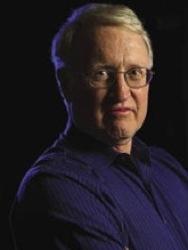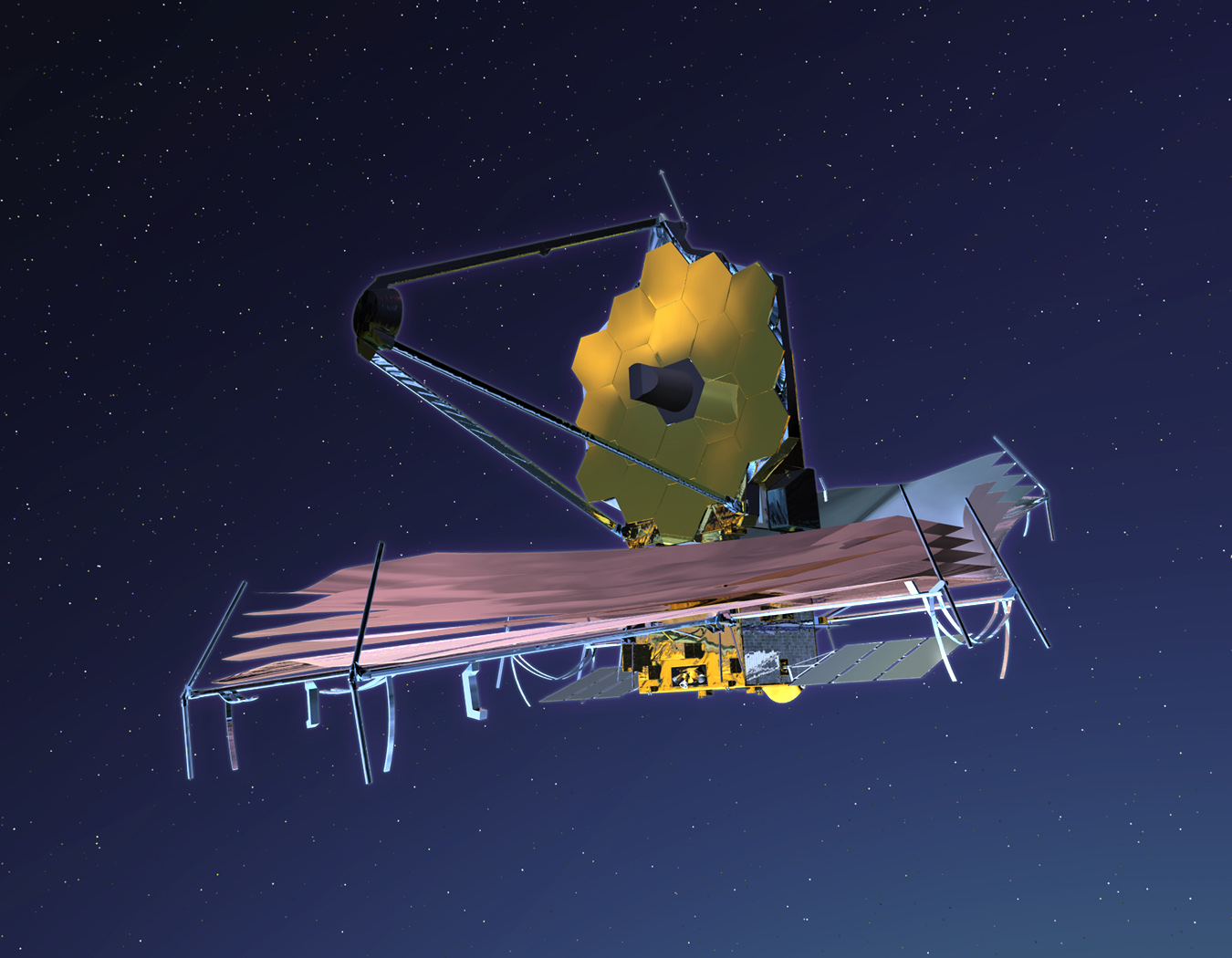Lorenzo Amati OAS, INAF, Bologna, Italy | Cosmology with Gamma-Ray Bursts The huge luminosity, the redshift distribution extending at least up to z∼10 and the association with the explosive death of very massive stars make long GRBs (i.e., those lasting up to a few minutes) potentially extremely powerful probes for shedding light on main open issues in our understanding of the early Universe: star formation rate evolution up to the first generation of stars (pop–III), cosmic reionization, luminosity function and metallicity evolution of primordial galaxies up to the ”cosmic dawn”. At the same time, the correlation between radiated energy and spectral photon peak energy ("Amati relation" is under intensive investigations for ”standardizing” GRBs and using them for measuring cosmological parameters, investigating the nature and evolution of ”dark energy” and testing non-standard cosmological models. I will also report on the status, concepts and expected performances of space mission projects (e.g., THESEUS) aiming at fully exploiting these potentialities of the GRB phenomenon, also in synergy with the large e.m. facilities of the future like LSST, ELT, TMT, SKA, CTA, ATHENA. | |
 Space Research Institute (IKI), Russia | Hubble Tension challenge in the modern cosmology: possible solutions One of the problems in the modern cosmology is a so-called Hubble tension (HT), which is the difference between values of the present Hubble constant H0, measured by observation of the universe at redshift z ≤ 1, and the same value measured by observations of a distant universe by observations of CMB fluctuations corresponding to z ≌1100. We suggest that this Tension may be explained by deviation of the cosmological expansion from a standard 𝜦CDM model of a flat universe, due to the action of an additional variable component DEV during the post-recombination stage. |
|
 IAPS, INAF, Rome, Italy | Polarized light from accreting low mass X-ray binaries The polarized X-ray radiation emitted from an accreting low mass X-ray binary (LMXB) is expected to give information about the geometry of the region where the Comptonization occurs and about the spin of the accreting BH. Actually, first results obtained from IXPE seem to reveal that the scenario for LMXBs is more complicated than expected: the polarization properties seem to differ from what current models have predicted. Moreover, while there are hints that winds and the reflection component could have a role in the detected polarised light, the most interesting result reported until now is that the polarization angle of both BH and NS LMXB seems to be aligned with the radio jets. |
|
Evgeny Derishev Institute of Applied Physics, Russia | Pair-balance model for relativistic shocks and its application to astrophysical sources Among astrophysical objects whose emission originates from relativistic shocks are active galactic nuclei, gamma-ray bursts, and pulsar winds. Their exceptionally broad spectra are due to synchrotron and inverse Compton emission of accelerated leptons. Although these radiation processes are common in space, the relativistic shocks and shear flows possess an efficient feedback mechanism that sets them apart from other particle acceleration sites. The feedback operates through inelastic collisions of high-energy inverse Compton photons with low-energy synchrotron photons, that create electron-positron pairs in a region where the flow's velocity is relativistic with respect to the photons' source. The pairs gain energy from the difference in flow's velocity. This constitutes the converter acceleration mechanism. Whenever it is efficient, the converter acceleration reaches nonlinear saturation regime, where momentum transfer by high-energy photons keeps flow's velocity gradient at minimum necessary for converter acceleration to operate. The balance occurs when photons from the inverse Compton peak in the spectrum have barely enough energy to produce pairs with photons from the synchrotron peak. This balance condition predicts the positions of both synchrotron and inverse Compton peaks, and the ratio of their heights. The predictions are in line with recent observations of TeV emission from gamma-ray burst afterglows. |
|
University of Bremen, Germany | Quantum sensing – the key technology for further gravitational experiments Progress in physics always has been stimulated by unexplained observations or experiments. Expressions like “dark matter” or “dark energy” might help to apply the present standard physical theories, but cannot explain their origin sufficiently. The situation of fundamental physics today still causes a lot of open questions, e.g. the theoretical inconsistency of quantum mechanics and General Relativity. Furthermore, there are observations which at least until now and after many years of studies, have not yet found any convincing explanation. |
|
 Zhan-Arys Dzhilkibaev Institute for Nuclear Research of the Russian Academy of Sciences, Russia | Neutrino Telescope Baikal-GVD: Status and Nearest Future The progress in the construction and operation of the Baikal Gigaton Volume Detector in Lake Baikal is reported. The detector is designed for search for high energy neutrinos whose sources are not yet reliably identified. It currently includes over 3500 optical modules arranged on 98 strings, providing an effective volume of 0.6 km3 for cascades with energy above 1 PeV. We review the scientific case for Baikal-GVD, the construction plan, and first results from the partially built experiment, which is currently the largest neutrino telescope in the Northern Hemisphere and still growing up. |
|
 Max-Planck Institute for Astrophysics, Germany and IKI, Russia | SRG/eROSITA all-sky survey: from solar flares and neutrino sources to cosmology After more than two years of scanning the sky the eROSITA X-ray telescope aboard SRG orbital observatory produced the best ever X-ray maps of the sky and discovered more than three million X-ray sources, of which about 20% are stars with active coronas in the Milky Way, and most of the rest are galaxies with active nuclei, quasars and clusters of galaxies. eROSITA detected over 103 sources that changed their luminosity by more than an order of magnitude, including about a hundred tidal disruption events. Two tidal disruption events are associated with IceCube neutrinos. SRG/eROSITA samples of quasars and galaxy clusters will make it possible to study the large-scale structure of the Universe at z~1 and measure its cosmological parameters. I will review some of the SRG/eROSITA results in the Eastern Galactic hemisphere. |
Spektr-RG, a Russian–German high-energy astrophysics space observatory, to be reported by Rashid Sunyaev and Marat Gilfanov, Max-Planck Institute for Astrophysics, Germany and Space Research Institute (IKI) of Russian Academy of Sciences, Russia |
 Garth Illingworth, University of California, Santa Cruz, USA | The Science Promise Now Being Realized After JWST's Decades of Challenges The James Webb Space Telescope is an astronomy mission that exceeds all others in capability. The first science results from JWST have already rewritten the science history books. JWST is astonishingly complex, yet it exceeds its requirements in essentially all areas. Its flawless launch and deployments are a testament to the engineering and management commitment of thousands of people in the US and in our partner nations, the European ESA and Canadian CSA, and of the support of policy-makers who funded this extraordinary mission through all its trials and tribulations. I will give a broad overview of the multi-faceted challenges that JWST faced and overcame, from birth 35 years ago, and of the early science results that challenge our understanding, particularly of the growth of galaxies in the early universe. |
|
Kunsan National University, South Korea | Neutron Stars as Strong Field QED Laboratory Strong electromagnetic fields polarize the vacuum and electric fields produce charged pairs, the so-called Schwinger effect. The critical strength of electromagnetic fields, whose energy density equals to the rest mass of the charge, cannot be achieved in present laboratories. The critical electric fields enormously produce electron-positron pairs and the critical magnetic field has the lowest Landau level whose energy equals the rest mass of the charge and gives a measurable effect on the photon propagation. |
|
 University of Oldenburg, Germany
| Black holes in alternative theories of gravity Black holes represent ideal laboratories to test Einstein's theory of general relativity and alternative theories of gravity. Alternative theories of gravity typically introduce additional degrees of freedom, among them most prominently a scalar field. Depending on the theory, the resulting black holes may then differ significantly from their counterparts in General Relativity. Possessing hair, such black holes might, for instance, be distinguished by their shadows or by their gravitational wave spectra. |
|
 University Bremen, Germany | New quantum technologies and gravity As has been emphasized in the talk of Hansjoerg Dittus, the second quantum revolution enables new technologies which are not accessible through classical physics. These technologies are characterized by the engineering and manipulating of quantum states. In this talk the interface between these new technologies and the gravitational interaction is highlighted by considering a few topics: (i) a metrological triangle for gravity, (ii) two gravitational constants, (iii) Hong-Ou-Mandel interferometry in gravitational fields, and (iv) quantum imaging of the gravitational field. |
|
 National Astronomical Observatories of China, China | Discoveries from FAST The Five-hundred-meter Aperture Spherical radio Telescope (FAST) has been in operation since early 2020. Largely motivated by the great Arecibo observatory, FAST now perches on the apex of sensitivity among centimeter-band radio instruments and will stay there until the advent of SKA. In a little three years, FAST data has facilitated more than 150 journal papers, including at least 7 on Nature, 2 on Science, 1 on Science Bulletin, and a few more on high-impact astronomy journals, such as Nature Astronomy. I will present a brief overview of FAST's discoveries so far, with particular emphasis on those that better reflects the unique advantages of this observatory. For example, the precise Zeeman measurement based on our novel HI Narrow Self-Absorption (HINSA) technique, the high quality HI images (~1% flux uncertainty), the world's first persistently active fast radio bursts (FRBs), etc. With these discoveries, I will also ponder upon the potential progresses to be made in terms of the better understanding the fundamental physical principles of the cosmos. |
|
 Ruhr-Universität Bochum, Germany | Neutrino astronomy: IceCube results and the future of multimessenger searches In the course of the last decade, the IceCube Neutrino Observatory has marked the first milestones of neutrino astronomy, starting with the discovery and characterisation of the astrophysical neutrino flux. Astrophysical neutrinos are unique tracers of hadronic particle acceleration and could be the key to unveil the origin of high-energy cosmic rays. IceCube has been hunting for the sources of astrophysical neutrinos with a wide range of methods. Its realtime program which sends prompt alerts to the multimessenger community following the detection of interesting IceCube events, led in 2017 to the association of a high-energy neutrino and the flaring blazar TXS 0506+056. Subsequent archival searches found a burst of neutrinos from the same location five years earlier. More recently, improved searches for steady point-sources have produced evidence of neutrino emission from the nearby active galaxy NGC 1068. In this talk, I will focus on these and other IceCube neutrino astronomy results and outline the perspective for its near-future multi-messenger searches. |
ICECube, neutrino observatory located at the South Pole, measuring neutrinos in the energy range 100 GeV to several PeV, with the volume 1 km3, to be reported by Massimiliano Lincetto, Ruhr-Universität Bochum, Germany |
 Sternberg Astronomical Institute, Russia | Extreme Universe through the eyes of MASTER Robots The Extreme Universe is the most powerful and fastest explosions in the Universe associated with the formation and transformation of relativistic stars. The latest results of the MASTER Global Robotic Network of Optical Robotic Telescopes are presented. |
MASTER (Mobile Astronomical System of the TElescope-Robots), a global robotic network of optical telescopes, observing transients such as gamma-ray bursts, to be reported by Vladimir Lipunov, Moscow State University, Russia |
 Paolo Mazzali Astrophysics Research Institute, Liverpool John Moores University, United Kingdom | 25 years of GRB/SNe: an overview 25 years after the discovery of the first GRB/SN, SN1998bw remains the best observed example of this extraordinary class of events. Several other GRB/SNe have been discovered, allowing progress in determining their overall properties. I will review some of the advances and outline the outstanding problems in this field. |
|
 CEA Saclay, France | Black hole induced star formation in the early universe In the local universe have been observed enhancements of star formation due to relativistic jets from accreting black holes (BHs). These BH “positive feedbacks” take place by the interaction of BH-jets with high-density molecular clouds, which leads to compression of the gas and subsequent enhancement of star formation. This BH-jet triggering mechanism of star formation must have been more important in the early universe, for two reasons. First, the global gas density in the universe evolves with redshift z as (1+z)3, and at z = 30 the global gas density would be more than 104 times the global gas density in the local universe. Second, revently have been increasing indications that in the galaxies of the early universe massive BHs came first and grow faster than the stellar populations. In this context, I propose that the rapidly growing BH seeds of the SMBHs of 109 M⊙ in quasars at z = 7 may have induced the formation of the first massive stars of Pop III. |
|
 Max-Planck-Institute for Physics, Germany | Selected Studies of Cosmic and Gamma Rays with the MAGIC telescopes MAGIC is a ground-based Imaging Atmospheric Cherenkov Telescope (IACT) for very high energy gamma-ray measurements that has pioneered high-sensitivity measurements down to a few tens of GeV. It includes a system of double telescopes with a diameter of 17 m, separated by a distance of 85 m, operating in coincidence mode (stereo). The telescopes are located at an altitude of 2200 m above sea level in the European Northern Observatory El Roque de los Muchachos on the Canary Island of La Palma. In recent years, the MAGIC collaboration has developed innovative techniques that have increased the dynamic range and sensitivity of the telescopes to around 20 GeV and up to 100 TeV. These have expanded and greatly improved the capabilities of the instrument. In this report we want to focus on some selected observations of cosmic and gamma rays of galactic and extragalactic origin. |
MAGIC (Major Atmospheric Gamma Imaging Cherenkov Telescope), operating in the energy range from 30 GeV to 100 TeV, to be reported by Razmik Mirzoyan, Max-Planck-Institute for Physics, Germany |
 ZARM, University Bremen, Germany
| Influence of a plasma on the shadow of black holes If a black hole is seen against a backdrop of bright light sources, it forms as dark disc on the observer's sky, known as the "shadow" of the black hole. If one assumes that light rays are not influenced by a medium, i.e., if one assumes that they are lightlike geodesics of the spacetime metric, the boundary curve of the shadow can be analytically determined, provided that the spacetime is stationary and axisymmetric and that the Hamilton-Jacobi equation for lightlike geodesics separates. In this talk it is discussed under which conditions such an analytical determination of the shadow is possible if the light rays are influenced by a non-magnetised pressure-less electron-ion plasma. Several examples are worked out, not only for black holes but also, for the sake of comparison, for some "black-hole impostors" such as wormholes. In particular, it is discussed if the boundary curve of the shadow can form "fishtails". |
Shadow curve with fishtails, in a plasma on Kerr spacetime. |

| The Cerenkov Telescope Array in a multi-wavelength context The advent of the Cerenkov Telescope Array (CTA) will increase dramatically the number of detected |
|
 | Relativistic Jets from Tidal Disruption Events Sw 1644 was one of the most surprising tidal disruption events (TDEs). Its prompt emission in soft gamma-rays triggered Swift. Later this was followed by X-ray and Radio afterglows. The energy implied by the radio afterglow increased by a factor of 10 over a period of a few hundred days, reaching an ultimate value of a few times 1052 erg. This is much higher than in other TDEs. Recently several TDEs have shown a delayed radio emission that began a few years after the event. I show that both events can be explained as relativistic jets viewed off-axis. This requires an initially relativistic jet with 1053 erg, making those events among the most energetic transient events. I will speculate on the origin of these events, as compared with regular TDEs that are significantly weaker, and on implications to other phenomena and in particular to the origin of Ultra High Energy Cosmic Rays. |
|
 Konstantin Postnov Sternberg Astronomical Institute, Moscow State University, Russia | Astrophysical searches for primordial black holes Interest to astrophysical evidence for primordial black holes formed in the early Universe from initial cosmological perturbation has increased after the discovery of coalescing binary black holes with masses more than dozen solar ones by gravitational-wave observatories. I will discuss the formation channels of merging binary black holes with a special focus on the possibility that some fraction of the observed binary black hole mergings can have the primordial origin. |
|
Jorge Rueda ICRANet Pescara, Italy | An electrodynamic process to extract the rotational energy of a Kerr black hole It has been thought for decades that rotating black holes (BHs) power the energetic gamma-ray bursts (GRBs) and active galactic nuclei (AGNs), but the mechanism that extracts the BH energy has remained elusive. This problem might be solved when the BH is immersed in an external magnetic field and ionized low-density matter. For a magnetic field parallel to the BH spin, the induced electric field accelerates electrons outward and protons inward in polar regions and vice versa in equatorial regions. For an antiparallel magnetic field, protons and electrons exchange their roles. The particles that are accelerated outward radiate off energy and angular momentum to infinity. The BH powers the process by reducing its energy and angular momentum by capturing polar protons and equatorial electrons that lead to net negative energy and angular momentum. The electric potential allows for negative energy states outside the BH ergosphere, so the latter does not play any role in this electrodynamical BH energy extraction process. |
|
 Yousef Sobouti Institute for Advanced Studies in Basic Sciences, Iran
| Three arguable concepts We address i) the point-particle assumption inherent to non-quantum physics. It is singular and entails divergences. ii) In quantum mechanics (QM) EM plays an asymmetric role. It acts on QM fields, but the latter does not react back. We suggest a mutual action-reaction partnership between the two. By so doing, QM fields share their analyticity with EM fields and remove the singularities. iii) The conventional U1 symmetry leaves QM and EM invariant under a ’general’ Lorentz gauge and causes the standard minimal coupling of QM to the EM 4-vector potential. One may, however, ask for invariance under the ’restricted’ Lorentz gauge. This invites in the coupling to the derivatives of the vector potential and enlarges U1. We examine the Dirac electron in the context just dscribed. Without recourse to QED, we find that electron develops non-singular and distributed charge and current densities. The enlarged symmetry has its own constant of motion. The anomalous g-factor of the so designed electron emerges, up to order (𝛼/𝜋)^2, as the constant of motion in agreement with the QED theorized and the laboratory measured values. |
|
 Massimo Stiavelli Space Telescope Science Institute, USA | The James Webb Space Telescope: status and science results I will briefly describe the James Webb Space Telescope and its status. I will provide an overview of its major science results, or planned observations, in areas that will impact cosmology and fundamental physics. |  JWST, the James Webb Space Telescope, operating in infrared, built by NASA in partnership with ESA and CSA |
 IAPS, INAF, Rome, Italy | The Imaging X-ray Polarimetry Explorer (IXPE) results from the first 1.5 years of observation The Imaging X-ray Polarimetry Explorer (IXPE) is a NASA-ASI Small Explorer mission selected on January 2017 and launched on 9th December 2021. Three X-ray mirrors are coupled to three Detector Units clocked at 120° each one hosting a Gas Pixel Detector, sensitive to X-ray polarization designed, built tested, and calibrated by INAF and INFN institutes. Some dozens of celestial X-ray sources, from almost all the classes, were observed so far, and for more than a half IXPE detected significant polarization. Some unexpected results were found by IXPE and in this talk after an introduction to the mission I will describe the main Astrophysical achievements reached so far. |
|
 Max-Planck Institute for Astrophysics, Garching; | X-Ray and microwave cosmology: synergy and competition. What do we expect from the next generation X-ray and microwave telescopes? Our Universe is filled with cosmic microwave background radiation (CMB) which is isotropic and has the black body spectrum with temperature 2.7 Kelvin. No spectral deviations from a black body have been detected in the CMB monopole until now. However, the physics of the interaction of CMB photons with hot electrons predicted the presence of "shadows" in the angular distribution of CMB in the directions where clouds of very hot electrons Te~106-108 K exist in our Universe. Today we know that such objects exist and they are clusters of galaxies containing thousands of galaxies each, a lot of dark matter, and hot gas filling the huge potential well. The "shadows" with very peculiar frequency spectrum arise due to the Thomson scattering interaction of the CMB photons with the hot electrons. Today this method has permitted us to discover more than 8 thousand of clusters and even a protocluster of galaxies at relatively high redshifts 0 < z < 2. Behind many newly discovered rich clusters of galaxies, we see the extremely distant galaxies with their shapes distorted and brightness increased due to gravitational lensing by the huge gravitational potential of the invisible "dark matter" present in a cluster The amplitude of the CMB brightness shadow corresponds only to a few tens to hundreds of microKelvin. There is another way to observe the same hot gas. On June 13th of 2019, Russia launched the SRG spacecraft with Russian ART-XC and German eRosita X-Ray telescopes aboard into the second Lagrangian Point of the Sun-Earth system. These telescopes are sensitive correspondingly to the hard and soft X-Ray photons. eRosita created the best map of the entire sky in X-Rays and was expected to discover more than 100,000 clusters of galaxies (i.e. all rich clusters of galaxies in the observable Universe) during the 4 years of surveying the full sky. At the same time, ground-based millimeter wavelength telescopes on the South Pole of the Earth and in the Atacama desert at 5 km altitude, equipped with tens of thousands of cryogenic bolometers in their focal planes, promise to detect the majority of these clusters due to their "shadows" in the CMB. These two data sets will be very complimentary and there will be a lot of synergy. At the same time, there is competition: who will be the first to discover the most interesting (massive, high z, etc) clusters of galaxies? Ensemble of 105 clusters, their distribution in space, mass, and redshift will provide a unique sample of data for testing cosmological models. The interaction of CMB photons with free electrons opens a unique way to measure the peculiar velocity of a cluster of galaxies relative to the unique system of coordinates in which the CMB is isotropic. Observers dream to measure peculiar velocities and even bulk and turbulent velocities inside the clusters of galaxies at any distance from us because both SZ effects (thermal and kinematic) do not depend on the redshift of the object. I will try to present the results of a search for the clusters obtained by eRosita and ground-based SPT and ACT microwave telescopes. In addition, I will try to mention a few new observational effects which might be discovered in addition to new clusters of galaxies using the methods of CMB cosmology. |
Spektr-RG, a Russian–German high-energy astrophysics space observatory, to be reported by Rashid Sunyaev and Marat Gilfanov, Max-Planck Institute for Astrophysics, Germany and Space Research Institute (IKI) of Russian Academy of Sciences, Russia |
 Landau Institute for Theoretical Physics, Russia | New developments in the inflationary scenario The present upper limit on the amount of tensor perturbations (primordial gravitational waves) generated during inflation, the tensor-to-scalar ratio r < 0.03, excludes many inflationary models popular in the past, like those with a power-law inflaton potential (‘chaotic inflation’). However, a number of viable inflationary models still remain including the three one-parametric models: the pioneer R2 one, the Higgs and the mixed R2-Higgs models whose unambiguous target prediction is r =3(1 - ns)2 = 0.004. New developments in these models are mostly related to their behaviour after inflation including creation and heating of usual matter. I consider one possibility of relating the purely geometrical R2 model to realistic baryogenesis after inflation by adding three families of right-handed Majorana neutrinos with a large mass to the matter sector of the Standard Model. Another trend in the inflationary scenario is to think what was before inflation. This is natural since duration of the inflationary epoch was finite inside our past light-cone. I discuss different possibilities proposed historically with the main emphasis on isotropic bounce due to positive spatial curvature, or even in its absence, or alternatively, generic anisotropic singularity with curvature much exceeding that during the observable part of inflation. |
|
 University di Ferrara, Italy and Astro Space Center, Lebedev Physical Institute, Russia | The spectral signatures of BHs versus NSs In 2017 the work on the Comptonization (Sunyaev-Titarchuk) seen in the X-ray spectra of astrophysical sources was a candidate for the Nobel Prize in Physics. In this talk I provide all the details of the exciting prehistory of this topic and precise details of this discovery. The solution of this problem and its subsequent development and application to the spectra of accreting neutron star (NS) and black hole (BH) binaries reveals a lot of information on these objects. In particular, now we can unambiguously distinguish between a NS and a BH (Galactic or extragalactic) using correlations of their spectral indices vs mass accretion rate (or QPO frequency). I further demonstrate how we can determine a BH mass using this correlation. |
|
 Min Zha Institute of High Energy Physics, CAS, China | The observation of GRB221009A from LHAASO LHAASO is a muti-purpose ground-based array of gamma-ray and cosmic-ray detectors in China, consisting of three detector arrays, the Water Cherenkov Detector Array (WCDA), the Kilo-meter squre Array ( KM2A) and the Wide Field of view Cherenkov Telescope Array (WFCTA). In this talk the observations of the brightest GRB 221009A by LHAASO including SEDs and light curves are to be presented. |
LHAASO (Large High Altitude Air Shower Observatory), a gamma-ray (200 GeV to 1 PeV) and cosmic-ray (from 1 TeV to 1 EeV) observatory in Tibet, China, to be reported by Ruoyu Liu, Nanjing University, China |
 Institute of High Energy Physics, China | Highlights of the Insight-HXMT X-ray Astronomy Satellite Insight-HXMT (hxmt.cn) is China’s first X-ray astronomy satellite and was successfully launched on June 15th, 2017. It carries three sets of collimated X-ray instruments with large effective areas, covering energy ranges of 1-15 keV, 5-30 keV, and 20-250 keV, respectively. In addition, it can also serve as an all-sky monitor for high energy sources between 0.2 to 3 MeV, such as bright pulsars and gamma-ray bursts. This talk will review some highlights of the scientific results of Insight-HXMT, including discoveries of the highest energy fundamental frequency of neutron star’s cyclotron absorption feature from an accretion neutron star, the highest energy low frequency quasi-periodic oscillations from an accretion black hole which is evidence for a relativistic jet near the black hole, the first non-thermal X-ray burst associated with a fast radio burst and its identification with a magnetar, the brightest gamma-ray burst GRB 221009A, etc. Insight-HXMT has been performing well in orbit and is expected to operate for several more years. The observational program of Insight-HXMT is open world-wide. |
Insight-HXMT (Hard X-ray Modulation Telescope), a Chinese X-ray space telescope observing black holes, neutron stars and active galactic nuclei, to be reported by Shuang-Nan Zhang, Institute of High Energy Physics, Chinese Academy of Sciences, China |
Choose timezone
Your profile timezone:


 Hansjoerg Dittus
Hansjoerg Dittus












